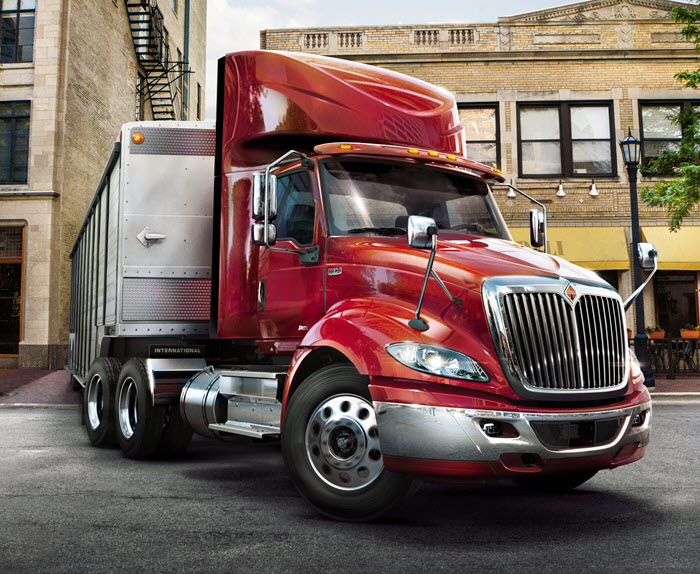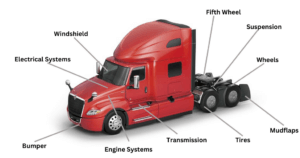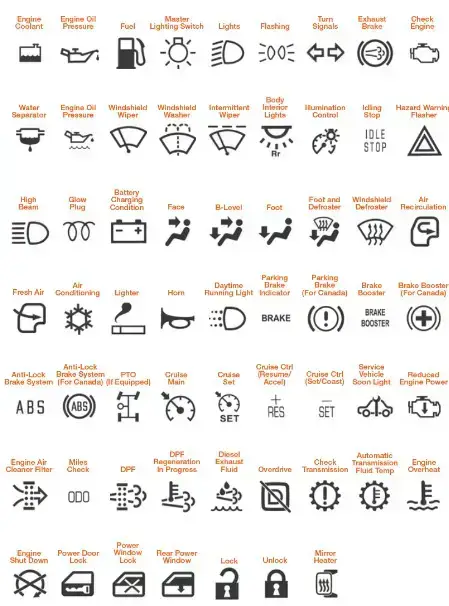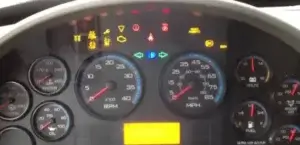What Are Fleet Services? A Comprehensive Guide
If you are in charge of a fleet-focused business, you’re already familiar with the complex dance that vehicles, logistics, and efficient operations involve. You may not know how fleet services can supercharge almost every part of the process.
Fleet services encompass everything related to assisting a firm in selecting, maintaining, optimizing, and managing its fleet—particularly in terms of maintaining your vehicle fleet once it has been assembled.
Imagine it as the pit stop where your vehicles get the royal treatment to ensure they’re ready to take on the miles ahead.
In this guide, you’ll learn to understand the essence of fleet services and the reasons why they create dependability and consistency in your operations.
What Do Fleet Services Include?
1) Fleet Selection/Consultation
Whether you’re ferrying goods, providing on-site services, or managing field operations, the vehicles you choose should seamlessly handle these tasks. Fleet selection involves not just choosing company vehicles within your budget but also understanding the long-term financial implications.
There are hundreds of makes and types to select from, and manufacturers may not be the best voices to listen to about the capabilities of their products. However, a fleet services professional understands how to choose the best vehicle for each company’s needs.
They understand all the factors that can have an impact on your operations. They can distinguish between the kinds of seats required for all-day drivers and special assignment drivers. They can tell you—with data—which trucks offer the best reliability on city streets vs. highway or country roads.
A fleet services professional will assist you by analyzing your company’s automotive demands and selecting the perfect models for your requirements. From there, you may proceed with acquisition via leasing or purchase, or whatever works best for your company.
2) Maintenance
Fleet services often include full maintenance and repairs for each vehicle in your fleet. They’re meant to keep a fleet in peak shape.
The reality is that a vehicle utilized for work runs continuously throughout the day, every day. The easiest way to get years of high-quality service out of each vehicle is to keep up with maintenance. That is precisely what fleet services were created to provide.
Not every company that requires automobiles has the time or personnel to keep a fleet in good working order. You might not have mechanics on staff, and with a fleet services package, you don’t have to.
Professionals in fleet services will do periodic inspections and tune-ups, often guaranteeing rapid diagnosis and prioritized service. They can also devise fleet-specific maintenance routines that drivers can follow between checks to keep their vehicles in peak shape.
While every fleet vehicle must be replaced at some point, diligent preventative maintenance (PM) may keep older vehicles functioning (and cost-effective) for many years.
Access to service history at any time helps techs diagnose problems faster and allows fleet managers to plan PM schedules. Furthermore, automated maintenance work reminders guarantee that vital service activities are not overlooked.
3) Optimization
There’s always an opportunity for improvement in business, and with mobile, that room is often evident in schedule tightness and policies that ensure your drivers have the support they need.
Different automobiles or different maintenance options can give you higher gas mileage per vehicle.
A different leased vehicle or a driver tech update may be the ideal optimization step. Fleet Service pros can examine your operation and recommend areas where you may be able to cut costs or improve profits. Once a strategy is established, your fleet services staff may handle or assist you in implementing the necessary modifications.
This includes assigning vehicles based on their capacities and ensuring that each trip utilizes the available schedule to the fullest.
Optimization isn’t just confined to vehicles; it extends to the drivers behind the wheel.
In the digital age, optimization is powered by data. Telematics—the technology that combines telecommunications and informatics—plays a pivotal role in collecting and analyzing data from your fleet.
4) Management
Behind every fleet operation are drivers who propel the vehicles forward.
Any company that requires commercial vehicles to function engages in fleet operations and fleet management in some capacity. Fleet management’s goal is to optimize all fleet procedures and policies in order to boost productivity and make a fleet and its crew work as smoothly as possible.
Vehicle telematics or fleet management software is often used by fleet management businesses to boost fleet efficiency and minimize operational expenses.
Fleet management for public organizations like governments and schools uses vehicle telematics data. They analyze things like where the vehicles are, what routes are most reliable, driver behavior, safety, and maintenance. This helps them improve their services and respond better to the people they serve.
With good fleet management, you can prolong the life of a vehicle, increase its fuel efficiency, and even minimize your organization’s carbon footprint, lowering expenses and increasing profits.
Why Do Fleet Services Matter?
1) More Reliable Services
Scheduled repairs prevent minor problems from escalating into major disruptions. Effective fleet management involves preventive and predictive maintenance practices to maximize vehicle uptime and longevity.
Imagine a scenario where your fleet operates seamlessly, ensuring your services are delivered consistently and punctually.
With routine maintenance, carefully charted routes, and real-time diagnostics, you can bid farewell to unexpected breakdowns and disruptive downtime.
As you consistently exceed customer expectations with a fleet that’s always in prime condition, your business reputation will soar to new heights.
Constant communication among managers, field staff, commercial drivers, and customers can be distracting and risky for drivers. It can also make their job less enjoyable.
Often, drivers have to stop to take calls. That wastes time and can be annoying. Many calls involve confirmations that could be handled by a field system.
However, with the appropriate fleet management software, most of these calls can be avoided. Fleet managers can use their software’s online dashboard to instantly find the driver’s location, confirm that a delivery is recorded as complete, and predict when the driver will return.
Knowing exactly where a driver is is important if there’s an emergency or breakdown. Because the manager knows where all the drivers are, they can react more effectively and more precisely understand the consequences of shifting different resources throughout the service area.
2) Cost Savings
In business, managing operational costs is akin to steering a financial ship through ever-changing waters.
Fuel is a significant portion of any fleet’s budget. Fleet tracking technology notifies you of specific vehicle idling as well as total idling throughout your whole fleet. You can track performance, track improvements, and implement plans that reduce idling time.
Fleet managers often struggle with driver retention and turnover, which can be caused by planning that puts too much pressure on one driver or team. Fleet management can help you control the factors that put pressure on your drivers.
Whether you’re aiming to enhance driver safety, manage risk, or boost driver satisfaction, using a consistent and relevant driver training program can also boost your fleet’s profitability.
Trucks stay in better shape, repair expenses decrease, crash risk goes down, and driver turnover sees a drop.
You can simply automate the procedure to send warnings when each vehicle’s maintenance is due. This will keep your vehicles on the road rather than in the shop.
A telematics solution lets you see engine info like fuel usage, odometer readings, temperature, and more. This means you’ll get better vehicle maintenance schedules. You won’t waste money on rarely used vehicles or forget about ones that need more attention.
3) Improved Tracking & Accountability
By using GPS tracking data, you can help drivers become better and foster a safety-focused atmosphere in your entire fleet.
Imagine being able to see their present position as well as where they’re going in real-time while simultaneously keeping a watch on traffic and weather conditions.
You’ll be able to track every vehicle’s specific location, allowing you to ensure on-time deliveries and successfully satisfy your client’s demands.
Whether they’re on the move or stationary, you can effortlessly access a continuous stream of live information or take a journey back in time with trip replays. This allows you to review their historical routes, distances covered, and past occurrences.
You can track and locate your assets in real time, reducing truck theft and abuse. You can also see asset diagnostics like signal strength and battery health. Assets such as cable stock, generators, bins, ladders, and other items can also be tracked.
And if that’s not enough, you can conveniently export a list of all the assets currently in operation.
4) Efficiency
With fleet management, you can easily spot which vehicles are running and which aren’t by entering them into a dashboard.
If something goes wrong, you can use the visibility provided to dispatch the vehicle closest to a task while rerouting other drivers to ensure that everyone gets to your clients as soon as possible.
Knowing which vehicle is available without having to make a phone call simplifies the life of your dispatchers. This will translate to higher efficiency in your operations.
A fleet management system, for example, can streamline your driver training operations. Because the application may collect data on your drivers’ driving patterns (for example, forceful braking, fast acceleration, and so on), you know which bad driving tendencies to highlight and rectify when teaching a driver.
What Businesses Benefit The Most from Fleet Services?
1) Government Fleets
County and municipal fleets include a variety of vehicles, ranging from street sweepers to public work vehicles, garbage and recycling trucks, and emergency service vehicles, to name a few.
Again, technology can help these fleets, particularly in terms of location. Depending on whether control is local or centralized, telematics technology is required in order to respond quickly and efficiently to emergency circumstances.
2) Rental Services
Rental companies must verify that any car or truck rented to a customer is safe to operate. Automobile rental firms offer tailored fleet maintenance regimens for each vehicle since clients have various driving patterns.
Many businesses also offer transportation to their employees. Employers who want their employees to be safe, happy, and productive practice fleet maintenance.
3) Long-Distance Trucking Companies
Long-distance freight trucks travel thousands of kilometers in a variety of situations. The expense of delayed delivery caused by breakdowns can be enormous. Preventive fleet maintenance reduces interruptions. With fleet services, these businesses can minimize delivery times, reduce fuel costs, and maintain a fleet that’s always in prime condition—factors that directly impact customer satisfaction and the bottom line.
4) Field Service Businesses
Field service providers, whether in HVAC, plumbing, or electrical services, thrive on timely responses and efficient operations. They sometimes need to employ different vehicles and vehicle assets depending on the size or kind of task required.
Real-time location, made possible by fleet telemetry, allows managers or owners to keep track of the whereabouts of their vehicles at all times.
5) Construction Industry
This industry employs both large and light machinery, as well as pricey items of equipment. Because job sites are sometimes in distant locations, keeping track of vehicle location and preventing theft is critical for this type of organization.
Farm vehicles such as pickup trucks, plows, harvesters, and tractors must also be maintained.
Do You Need Fleet Services?
Ever thought about how fleet services could be your answer to a better future in today’s business world?
If you’re in the business of delivering goods, providing on-site services, overseeing construction projects, or running a sprawling e-commerce venture, integrating fleet services could propel you to unprecedented levels of success.
If the potential of fleet services has sparked your interest, take the next step and delve into what Kyrish Truck Center Group has to offer. Our broad array of fleet services can be tailored to meet your company’s specific needs. Contact us today!
 It is crucial for your business to understand how much it costs to keep your semi trucks in good shape. Handling maintenance doesn’t have to be difficult. You can avoid unplanned costs and operate your trucks properly with the right information and planning.
It is crucial for your business to understand how much it costs to keep your semi trucks in good shape. Handling maintenance doesn’t have to be difficult. You can avoid unplanned costs and operate your trucks properly with the right information and planning. 










